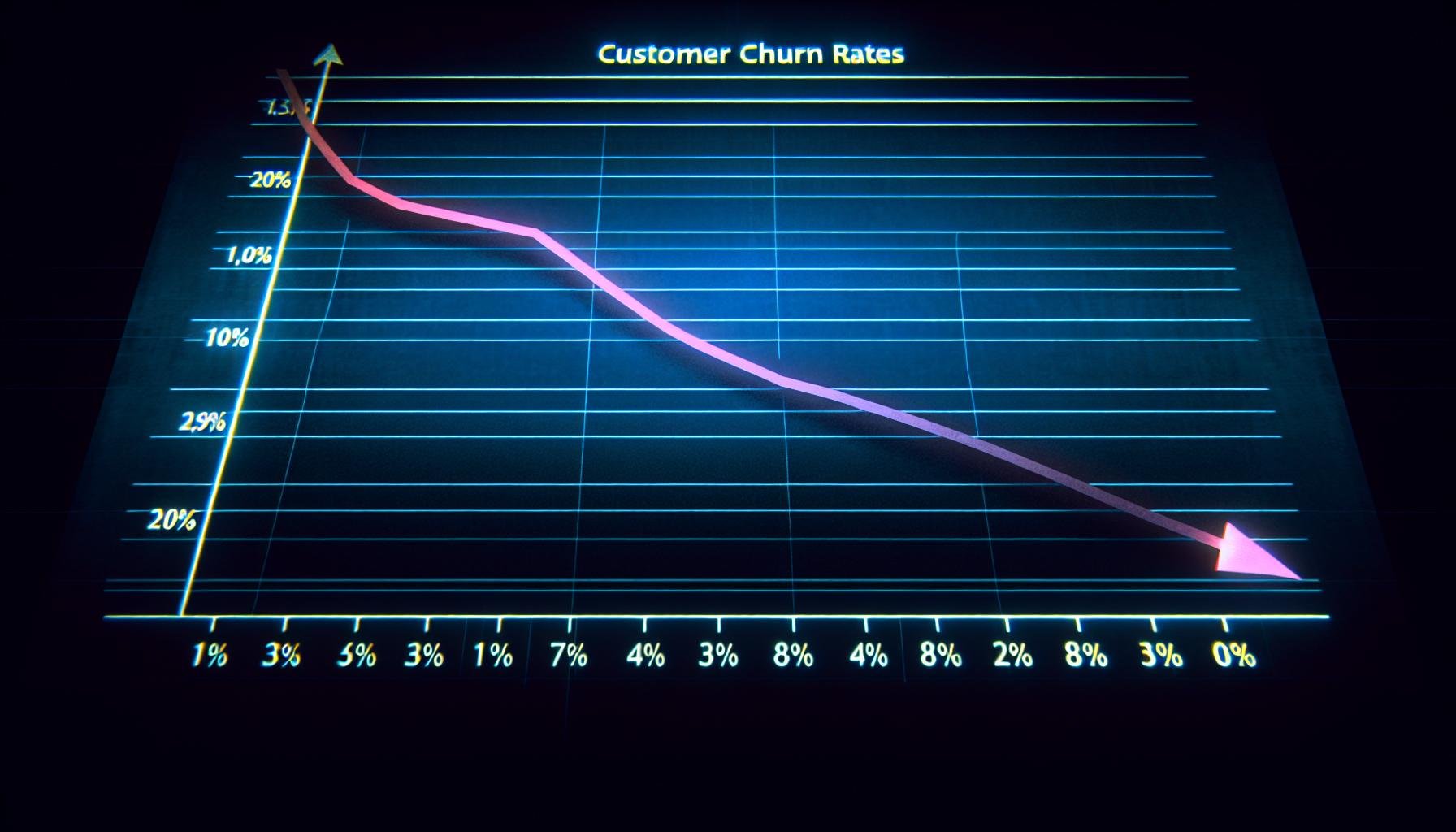3 min read
Strategies for Success: Tackling Customer Churn and Elevating Customer Satisfaction
Brian Polackoff
:
Apr 4, 2024 2:30:00 PM

In the highly competitive landscape of business, customer churn can be a significant hurdle that companies face. Understanding customer churn is essential for any business aiming to reduce churn rate and elevate customer satisfaction. By identifying the causes of churn and the different types it can manifest as, businesses can develop effective strategies to prevent churn and enhance the overall customer experience.
Understanding Customer Churn
Customer churn, also known as customer attrition, refers to the rate at which customers stop doing business with a company or product. This phenomenon can be attributed to various factors, including poor customer service, unmet customer needs, or mismatched customer expectations. By delving deeper into the causes of churn, businesses can gain insights into customer behavior and tailor their customer success strategies to address these issues effectively.
Causes of Churn
The causes of churn can vary from poor customer relationships to inadequate customer support. Factors such as high churn rates may indicate that customers are not receiving the level of service or value they expect, leading them to seek alternative solutions. By analyzing customer interactions and feedback, companies can proactively identify potential churn indicators and take steps to prevent churn before it escalates.
Types of Churn
Churn can manifest in different forms, including voluntary churn where customers actively choose to discontinue their relationship with a business, and involuntary churn where factors outside the customer's control lead to the termination of services. By understanding the different types of churn, businesses can implement tailored customer retention strategies to keep their customers engaged and satisfied, thus reducing overall churn rates and increasing long-term customer value.
Implementing Customer Success Strategies
Customer success strategies play a vital role in reducing churn rate and enhancing customer satisfaction. Implementing proactive customer support is key to preemptively addressing customer issues and ensuring a positive customer experience. By offering timely assistance and solutions, businesses can help customers overcome hurdles and improve their satisfaction levels.
Proactive Customer Support
Proactive customer support involves anticipating customer needs and reaching out to offer assistance before customers encounter problems. This approach helps in building strong customer relationships and fostering loyalty. By being proactive in addressing concerns, businesses can prevent churn and strengthen their customer base.
Customer Engagement
Customer engagement is essential for retaining customers and increasing their lifetime value. Engaging customers throughout their journey with personalized interactions and valuable insights can enhance their experience and loyalty. By keeping customers satisfied and engaged, businesses can reduce churn rates and establish long-term relationships.
Customer Needs Assessment
Conducting regular customer needs assessments allows businesses to understand evolving customer requirements and tailor their products or services accordingly. By identifying and addressing customer needs proactively, companies can cater to specific preferences and provide solutions that meet customer expectations. This proactive approach can significantly enhance customer satisfaction and reduce the likelihood of churn.
Reducing Customer Churn Rates
Customer churn is a critical aspect that businesses need to address to maintain a loyal customer base and elevate customer satisfaction. By implementing effective strategies, companies can reduce churn rates and enhance the overall customer experience.
Preventing Churn
In order to prevent churn, it is essential for businesses to proactively address the reasons that lead customers to churn, such as poor customer service or unmet customer needs. By analyzing customer feedback and behavior, companies can identify potential churn indicators and take necessary actions to retain customers.
Customer Retention Techniques
Implementing customer retention techniques, such as proactive customer support and personalized customer engagement, can significantly reduce churn rates. By offering timely assistance, businesses can help customers overcome challenges and improve their satisfaction levels, thus increasing long-term customer loyalty.
Helping Customers Succeed
Helping customers succeed involves understanding their needs and preferences through regular assessments. By tailoring products or services to meet customer expectations, companies can enhance customer satisfaction and minimize the likelihood of churn. By prioritizing customer success, businesses can strengthen relationships and foster customer loyalty.
Elevating Customer Satisfaction
Building strong customer relationships is fundamental in elevating customer satisfaction. By fostering trust and rapport with customers, businesses can create long-lasting connections that go beyond transactions. Providing personalized experiences and demonstrating genuine care for customers' needs can strengthen these relationships, leading to increased loyalty and satisfaction.
Setting customers up for success involves understanding their goals and helping them achieve desired outcomes with the product or service. By offering guidance and support throughout the customer journey, businesses can empower customers to make the most of their interactions. This proactive approach not only enhances customer satisfaction but also increases the likelihood of customer retention.
Building Strong Customer Relationships
Establishing strong customer relationships requires open communication, active listening, and consistent engagement. By acknowledging customer feedback and addressing concerns promptly, businesses can show customers that their opinions are valued. Creating a dedicated customer success team can further enhance relationship-building efforts by providing specialized support and guidance tailored to individual needs.
Setting Customers Up for Success
Setting customers up for success involves proactive customer onboarding and ongoing support. By ensuring that customers are equipped with the knowledge and resources needed to achieve their goals, businesses can lay a strong foundation for a successful partnership. Offering regular check-ins and resources to help customers navigate challenges can empower them to overcome obstacles and succeed in their endeavors.

Maximizing Revenue Growth through Data-Driven Customer Success Strategies
In today’s competitive business environment, maximizing revenue growth requires an explicit focus on customer success driven by data. Companies are...

Mastering Customer Churn Prediction: Key Strategies for SaaS Success
In the fast-paced world of Software as a Service (SaaS), understanding customer behavior and satisfaction is crucial in maintaining a competitive...
